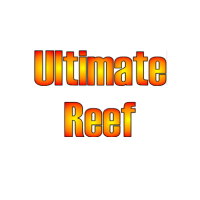Ok, a couple of notes. I have a nice little PAR meter at home. I have all 3 technologies (T5, LED, Metal Halide). Lumen per watt is not an apples to apples comparison. In real world testing of par and also input wattage, LED is marginally better than T-5 and Halides. You need two Radions to equal one properly driven Radium 20k based on PAR coverage. The wattage between the two technologies are negligible. Also assuming an LED will run for more than 5 years without failure is false. I think you are going off of data online vs. real world observations and self generated data.
I have done a complete analysis on T-5 vs LED for a 10'x5' frag tank. It takes 5 years for the Radion LED's to start saving money compared to an ATI T-5 system. I talked with someone very high up in the coral propagation world and he confessed that one Radion Pro 30 at best covers a 24" square, he actually uses 3 radion pro 30's for a 2'x4' frag tank. For a 3' x 6' tank that WWC runs, they use 6 radions, the exact same ratio as my source stated. Back to the 2'x4' frag tank, that is a total of 570 watts of power. You can easily cover a 2'x4' frag tank with two 250w metal halides and draw from the wall will be at 575 watts. If you compare PAR output, the halides win for overall par output. Again this is on my actual data.
Ceramic metal halides, when compared to regular halides are the un-matched PAR monsters of the industry. I have no doubt that they will blow away the LED fixtures. Once I buy a CMH until I will prove it!!!
I have done a complete analysis on T-5 vs LED for a 10'x5' frag tank. It takes 5 years for the Radion LED's to start saving money compared to an ATI T-5 system. I talked with someone very high up in the coral propagation world and he confessed that one Radion Pro 30 at best covers a 24" square, he actually uses 3 radion pro 30's for a 2'x4' frag tank. For a 3' x 6' tank that WWC runs, they use 6 radions, the exact same ratio as my source stated. Back to the 2'x4' frag tank, that is a total of 570 watts of power. You can easily cover a 2'x4' frag tank with two 250w metal halides and draw from the wall will be at 575 watts. If you compare PAR output, the halides win for overall par output. Again this is on my actual data.
Ceramic metal halides, when compared to regular halides are the un-matched PAR monsters of the industry. I have no doubt that they will blow away the LED fixtures. Once I buy a CMH until I will prove it!!!






















